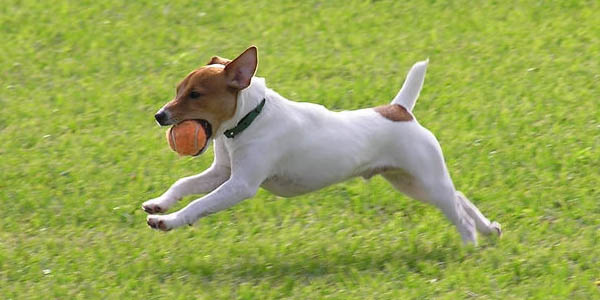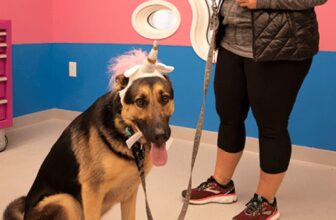
You may have heard the term “runner’s high”. This is a rush of endorphins that follows intense exercise, and it produces a feeling of calm and well being. People who enjoy jogging, cycling and similar forms of exercise often say that this is one of the best parts of keeping fit. In fact, these endorphins can be addictive and are the reason that many people stick to an exercise program.
Recent research from a United States university has shown that dogs too experience an endorphin rush after exercise. However, this only occurs after high intensity activities such as running. Low intensity activity such as going for a walk doesn’t have the same effect.
What does this mean for your dog? It means that you can use exercise to help to modify your dog’s behavior and to reduce anxiety.
Some dogs that have separation anxiety benefit greatly from an hour or so of running before they are left alone. They are comfortably weary and the endorphins will help them to stay calm.
If your dog has another type of anxiety disorder, such as a fear of other dogs, this too can be helped by increasing his exercise.
Even dogs with no behavioral problems are less likely to dig, chew or pull your laundry off the line if they are able to use up their excess energy with a good run.
Another advantage of increasing your dog’s exercise is that he will lose weight and tone up, which is good for his general health.
How to Exercise Your Dog
Before you take your dog out for a 3 mile jog, it’s important that you have him examined by your veterinarian to make sure there aren’t any reasons why he can’t run. Some breeds, such as the Bulldog or Pug, just aren’t suited to running because of their short nose – they can have difficulty breathing and may overheat. Young dogs shouldn’t exercise too much until their bones and joints are matured. Wait until your pup is 12 months old before starting a running program with him.
If he gets the green light from his doctor, start gently with an easy walk/run program. Gradually over the next few weeks, increase the amount of running you do and decrease the walk breaks. Over 8-12 weeks, you and your dog should be able to work up to running an easy 3 miles.
Alternatives to Running
If you just can’t bear the thought of running yourself, then you’ll be glad to know there are alternatives.
You can take your dog out with you while you ride a bicycle, or roll along on inline skates. If you do this, then you need to make sure your dog is well trained. If he takes off after a squirrel or a cat, you could take a tumble.
If your canine best friend is elderly or has sore joints, then you may want to take him swimming. If you don’t live near a lake, then look for a hydrotherapy facility with a heated pool. This is also a good option for the colder months of the year.
Dogs need to expend energy, and they benefit greatly from the endorphin rush that comes with a high intensity exercise session. Think about how you could increase the amount of exercise in your dog’s life.
Susan Wright DMV is a dog expert, a vet and a freelance writer often sharing affordable ways to raise dogs





